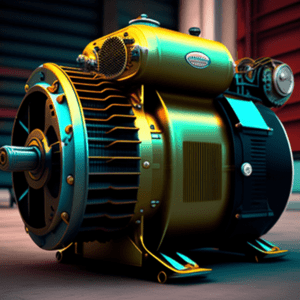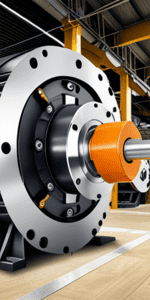Check and Test the Performance of Electric Motors According to Hong Konger Rules
Globally, industrial electric motors are utilized to power a vast array of applications. The International Energy Agency (IEA) estimates that the automobile industry consumes up to 70% of all industrial energy, 35% of energy utilized in the commercial and service sectors, and 45% of all produced power. Electric motors are vital to a variety of industrial processes, as each hour of downtime caused by a motor failure costs thousands of dollars. They are the primary cause of greenhouse gas emissions from power plants and their detrimental consequences on the environment.
In addition, they are responsible for the significant increase in power usage in emerging nations. Globally, advances in industrial motor energy efficiency have the potential to enhance the economy by 20% to 30%, with most payback times of less than three years. Electric motors are responsible for approximately 15%, or 4.3 billion tons, of the world’s yearly CO2 emissions, which total 26 billion tons. Increasing energy efficiency is one of the most cost-effective and low-risk solutions to reduce greenhouse gas emissions and halt the increase in energy consumption.
Utilize a motor that is in good condition since:
- Reduced operational expenses
- A farther, colder, and more tranquil distance.
- Motors with increased efficiency and durability
- Lower emissions of greenhouse gases into the atmosphere.
Table of Contents

Starting a Motor:
Typically, electric motors do not convert 100 percent of the electricity they receive into mechanical energy. Some energy is wasted due to friction, windage, and losses in the stator, rotor, and magnetic core. These losses are reducing the performance of the motor. Considering how much energy is utilized and how electric motors are utilized in industry, it is evident why and how crucial it is to analyze energy efficiency and establish basic energy performance standards. How precisely efficiency and motor loss are determined depends on the testing method chosen. No testing procedure is employed worldwide across all industries. Although the concept is simple, it may be difficult to quantify and verify the energy efficiency of a motor using various standards.

Methods for Measuring Effectiveness That Are Widely Employed:
In industrial environments, the following testing procedures are commonly mentioned:
IEEE (Institute of Electrical and Electronics Engineers) 112-2004 is a typical method for testing multiphase motors and generators. Tests, “Methods for Calculating the Efficiency and Losses of Rotating Electrical Equipment,” International Electrotechnical Commission (IEC) Publication 60034-2-1, 2014. JEC 37 was developed by the Japanese Electrotechnical Committee as the standard for induction devices. IEEE Standard 112-2004 IEEE Standard 112-2004
This approach for determining the efficiency of energy usage employs 10 measures. To establish what is most essential:
- Simple test of inputs and outputs
- Testing with input and output that are loss-separated.
- Testing two interconnected devices back-to-back.
- The load losses are computed utilizing the smoothed residual losses.
- The “Eh-star” strategy
IEC standard testing is available in three distinct formats:
- Determining the input and output power of a machine.
- Monitoring the power transfer between two series-connected devices.
- The losses of a single machine were tallied.
The increased load losses have no effect on the test techniques of the Japanese JEC standard 37. Businesses may save money and benefit the environment by reducing the energy use of their equipment and appliances. This is one of the many significant economic and environmental benefits. In addition to Hong Kong Island, Kowloon, New Territories, and Lantau Island, we offer motor start analysis services in all major cities.

RELATED NEWS








Coordination


RELATED NEWS











